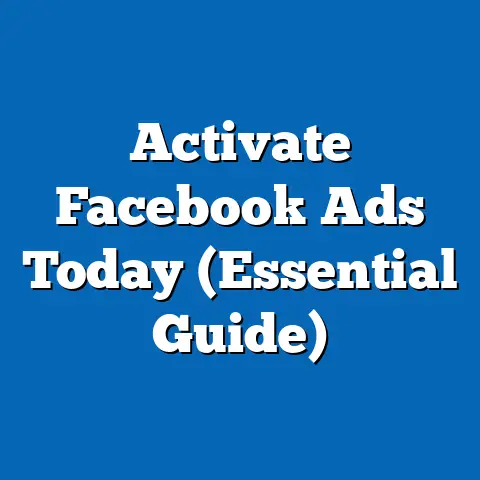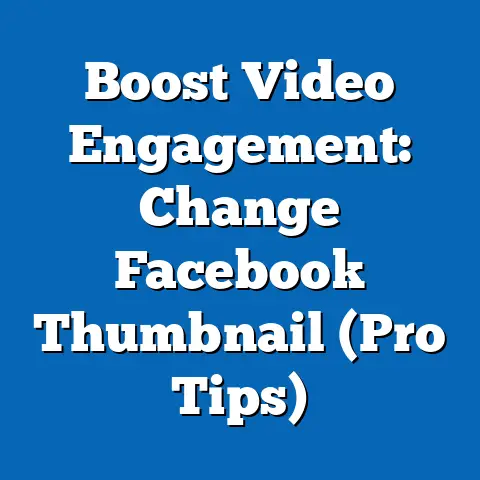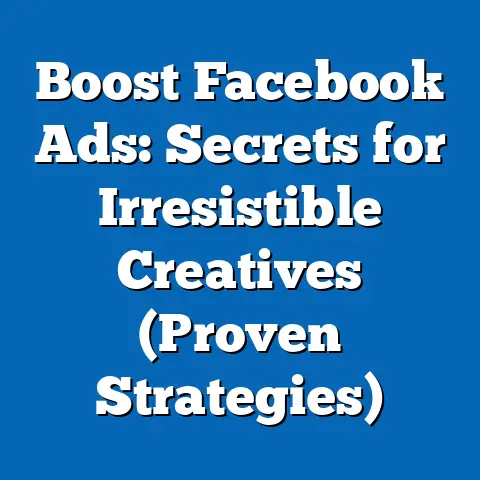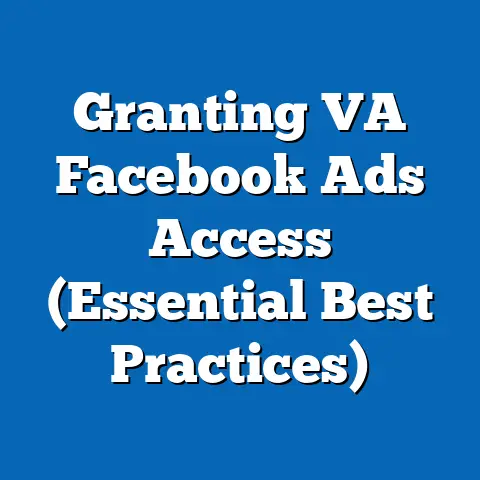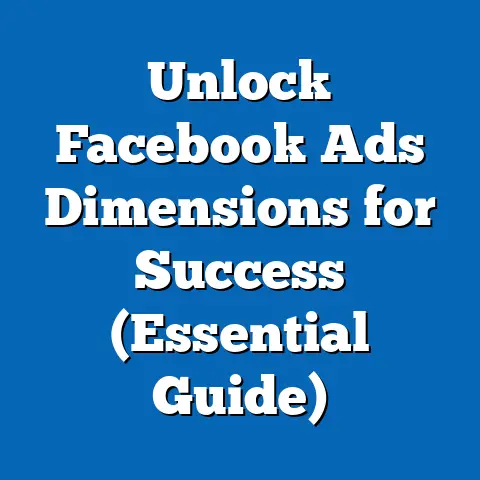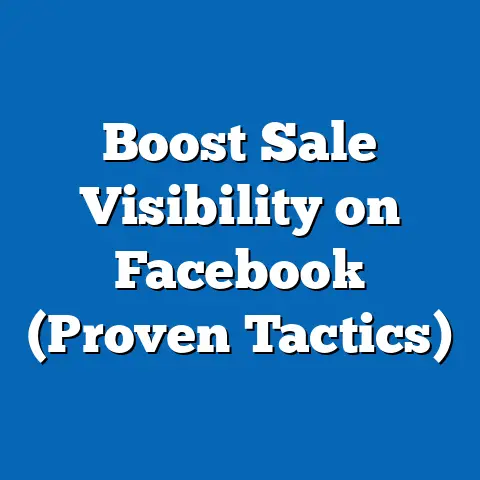Sell Ads in Facebook Group (Proven Strategies)
Selling Ads in Facebook Groups: Proven Strategies
“I never thought my small business could get this much traction from a Facebook group! The targeted ads drove a 300% increase in sales within the first month,” says Sarah, owner of a boutique handmade jewelry store. This isn’t just a lucky break; it’s a testament to the power of advertising within niche Facebook communities.
In today’s digital marketing arena, the shift towards community-driven engagement is undeniable. Facebook groups, once simply a place for hobbyists and friends to connect, have become fertile ground for targeted advertising. I’m going to guide you through the proven strategies that can help you tap into this potential and drive real results for your business.
Understanding the Facebook Group Landscape
Facebook groups are essentially online communities centered around shared interests, hobbies, or goals. These groups come in three flavors:
- Public Groups: Anyone can join and see the posts.
- Closed Groups: Members can see the posts, but you need to request to join.
- Secret Groups: Completely private; you need an invitation to even find them.
Why are Facebook groups so significant?
In 2023, Facebook reported that over 1.8 billion people use Facebook groups every month. That’s a massive audience! What sets these groups apart is their hyper-focused nature. Unlike traditional ad placements, which often rely on broad demographic targeting, Facebook groups allow you to reach individuals who have explicitly expressed interest in a specific topic. This leads to higher engagement rates, increased brand loyalty, and ultimately, better ROI.
Think of it this way: instead of shouting into a crowded stadium, you’re having a conversation in a cozy living room with people who are genuinely interested in what you have to say.
Benefits of Advertising in Groups:
- Targeted Audiences: Reach users who are passionate about your niche.
- Higher Engagement Rates: Members are more likely to interact with content they find relevant.
- Cost-Effective: Often more affordable than traditional Facebook ad campaigns.
- Direct Feedback: Get instant insights and opinions from your target audience.
Identifying the Right Groups
Finding the right Facebook groups is like panning for gold; it takes a bit of effort, but the rewards are well worth it.
Strategies for Finding Your Tribe:
- Keyword Search: Start by searching for relevant keywords related to your product or service. For example, if you sell eco-friendly cleaning products, search for terms like “eco-friendly living,” “sustainable homes,” or “green cleaning tips.”
- Competitor Analysis: See which groups your competitors are engaging with. This can give you a head start in identifying valuable communities.
- Facebook’s “Suggested Groups”: Facebook’s algorithm is pretty smart. Once you join a few relevant groups, it will start suggesting similar communities based on your interests.
Niche Relevance and Community Engagement:
It’s not enough to simply find a group with a large membership. You need to ensure that the group is actively engaged and that its members are genuinely interested in your niche.
Tips for Evaluating a Group:
- Activity Level: How often are members posting and commenting? A dead group is useless for advertising.
- Member Demographics: Are the members your target audience? Look for groups where the demographics align with your ideal customer profile.
- Engagement Metrics: What’s the average number of likes, comments, and shares per post? A high engagement rate indicates a healthy, active community.
Example: I once tried advertising a new line of organic dog treats in a group called “Dog Lovers United.” The group had over 50,000 members, but the engagement was abysmal. Most posts received only a handful of likes and comments. I quickly realized that the group was more of a passive collection of profiles than an active community. I shifted my focus to smaller, more niche groups like “Golden Retriever Owners Club” and saw a much better response.
Takeaway: Don’t be fooled by large numbers. Focus on finding groups that are actively engaged and highly relevant to your niche.
Building Relationships in Groups
Selling in Facebook groups is a social game, not a billboard advertising campaign. You can’t just barge in and start pitching your product; you need to build relationships first.
Why Building Rapport Matters:
- Trust: People are more likely to buy from someone they trust.
- Credibility: Establishing yourself as a valuable member of the community enhances your credibility.
- Long-Term Value: Building relationships leads to repeat customers and brand advocates.
Strategies for Authentic Engagement:
- Participate in Discussions: Share your expertise, answer questions, and offer helpful advice.
- Provide Value: Share valuable content, such as blog posts, videos, or infographics, that are relevant to the group’s interests.
- Be Authentic: Don’t be afraid to show your personality and connect with members on a personal level.
- Listen More Than You Talk: Pay attention to the conversations and identify opportunities to contribute meaningfully.
Working with Group Admins:
Group admins are the gatekeepers of the community. Approaching them respectfully and building a relationship can open doors to advertising opportunities.
Tips for Approaching Admins:
- Introduce Yourself: Explain who you are and what your business does.
- Offer Value: Offer to contribute to the group by providing valuable content or resources.
- Ask for Permission: Always ask for permission before posting any promotional content.
Example: I once reached out to the admin of a popular parenting group to offer a free webinar on “Potty Training Tips.” The admin loved the idea and allowed me to promote the webinar within the group. This not only generated leads for my business but also established me as a trusted expert in the community.
Takeaway: Building relationships is the key to unlocking the advertising potential of Facebook groups. Be authentic, provide value, and approach admins respectfully.
Creating Compelling Ad Content
Your ad content is your chance to shine. It needs to be engaging, informative, and tailored to the specific group you’re targeting.
Best Practices for Crafting Effective Ads:
- Know Your Audience: Understand their pain points, desires, and motivations.
- Use a Conversational Tone: Avoid sounding like a corporate robot.
- Highlight the Value Proposition: Explain how your product or service will benefit them.
- Use High-Quality Visuals: Images and videos are essential for capturing attention.
- Keep it Concise: Get to the point quickly and avoid unnecessary jargon.
Effective Ad Formats:
- Images: Use visually appealing images that showcase your product or service.
- Videos: Create short, engaging videos that tell a story or demonstrate the benefits of your product.
- Polls: Use polls to gather feedback and engage with members.
- Questions: Ask questions to spark conversation and encourage interaction.
The Power of Clear Calls to Action:
Your ad should always include a clear call to action (CTA) that tells members what you want them to do.
Examples of Effective CTAs:
- “Learn More”
- “Shop Now”
- “Sign Up”
- “Get a Free Quote”
- “Join Our Community”
Creating Urgency Without Being Pushy:
- Limited-Time Offers: “Get 20% off your first order when you sign up today!”
- Scarcity: “Only 10 spots left!”
- Deadlines: “Offer ends this Friday!”
Example: I ran a Facebook ad in a group for vegan food enthusiasts promoting a new plant-based meal delivery service. Instead of just saying “Try our vegan meals,” I used a compelling image of a delicious-looking meal and wrote: “Craving healthy, delicious vegan food without the hassle of cooking? Get your first week of meals 50% off when you sign up today! Limited spots available.” This ad generated a significant number of sign-ups because it spoke directly to the audience’s desires and created a sense of urgency.
Takeaway: Your ad content should be tailored to the specific group, visually appealing, and include a clear call to action. Create urgency without being pushy by highlighting limited-time offers or scarcity.
Leveraging Different Ad Formats
Facebook groups offer a variety of ad formats that you can leverage to enhance your visibility and engagement.
Popular Ad Formats for Facebook Groups:
- Sponsored Posts: These are regular posts that you pay to promote within the group.
- Product Promotions: Showcase your products directly within the group feed.
- Event Announcements: Promote upcoming events or webinars to group members.
- Facebook Live: Host live videos to engage with members in real-time.
- Stories: Share short, engaging stories that disappear after 24 hours.
The Power of Facebook Live:
Facebook Live is a powerful tool for building relationships and engaging with your audience in real-time.
Tips for Hosting a Successful Facebook Live:
- Promote in Advance: Let group members know when you’ll be going live.
- Choose a Relevant Topic: Select a topic that is of interest to the group.
- Be Interactive: Ask questions, respond to comments, and encourage participation.
- Offer Value: Provide helpful tips, insights, or exclusive content.
Case Study: A local fitness studio used Facebook Live to host a free workout session in a group for busy moms. The session was a huge success, attracting over 200 live viewers and generating a significant number of leads for the studio.
Takeaway: Experiment with different ad formats to see what works best for your business. Facebook Live is a powerful tool for building relationships and engaging with your audience in real-time.
Measuring Success and Refining Strategies
Advertising in Facebook groups is not a “set it and forget it” endeavor. You need to track your results and refine your strategies based on the data.
Key Metrics to Track:
- Engagement Rate: The percentage of members who interact with your ad (likes, comments, shares).
- Reach: The number of unique individuals who saw your ad.
- Conversions: The number of members who took a desired action (e.g., sign up, purchase).
- Click-Through Rate (CTR): The percentage of members who clicked on your ad.
- Cost Per Click (CPC): The amount you pay for each click on your ad.
Tools and Techniques for Analyzing Ad Performance:
- Facebook Insights: Provides detailed data about your ad’s performance.
- Google Analytics: Track website traffic and conversions from your Facebook group ads.
- A/B Testing: Test different ad variations to see what performs best.
Refining Your Ad Strategies:
- Adjust Your Targeting: If your ads aren’t reaching the right people, adjust your targeting criteria.
- Improve Your Ad Content: If your ads aren’t engaging, try different visuals, headlines, or calls to action.
- Experiment with Different Ad Formats: If one ad format isn’t working, try another.
Example: I ran a series of Facebook ads in a group for home cooks promoting a new line of gourmet spices. Initially, the ads had a low engagement rate and a high cost per click. After analyzing the data, I realized that the ads were too generic and didn’t speak to the specific needs of the group. I refined the ad content to highlight the unique flavors and benefits of the spices, and the engagement rate and click-through rate increased dramatically.
Takeaway: Track your ad performance metrics, analyze the data, and refine your strategies based on the results. A/B testing is a valuable tool for optimizing your ad content and targeting.
Conclusion
Facebook groups offer a unique and powerful platform for targeted advertising. By understanding the group landscape, building relationships, crafting compelling ad content, leveraging different ad formats, and measuring your success, you can tap into this potential and drive real results for your business.
Don’t be afraid to experiment, iterate, and learn from your mistakes. The world of Facebook group advertising is constantly evolving, so stay curious and keep testing new strategies.
Now it’s your turn to take action! Start by identifying relevant Facebook groups, building relationships with members, and crafting compelling ad content that resonates with your target audience. I’m confident that you’ll see a significant return on your investment. Good luck!

